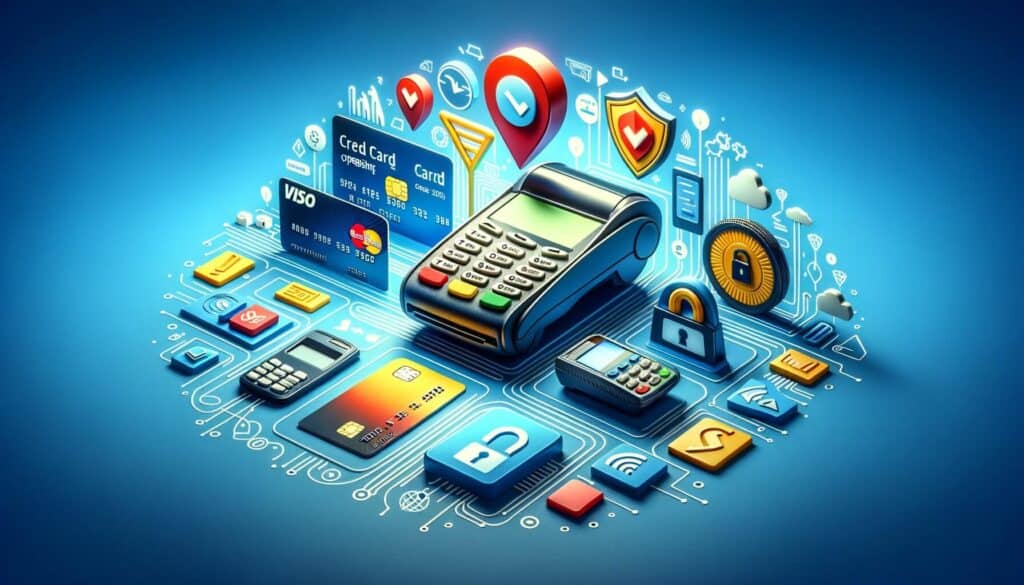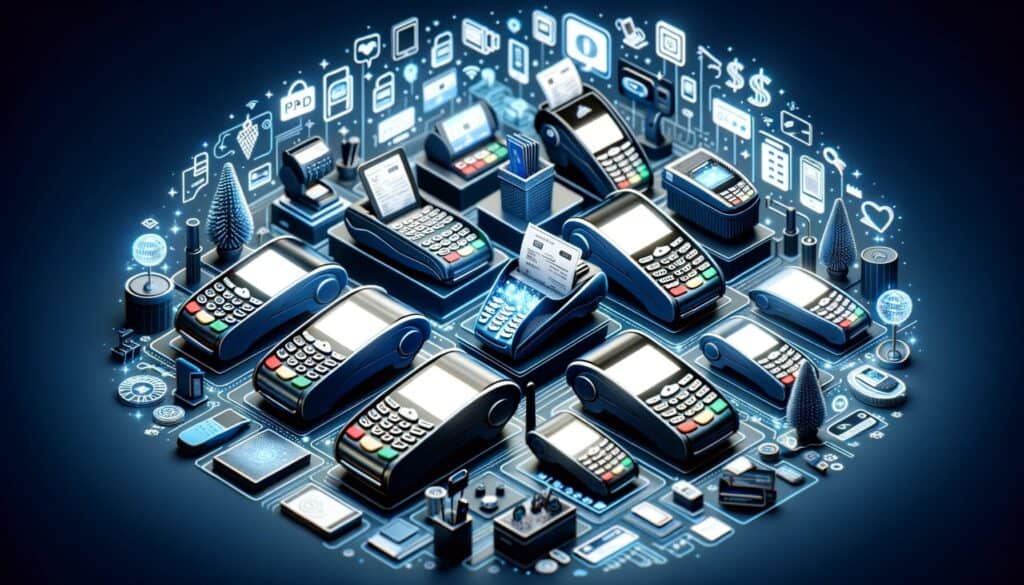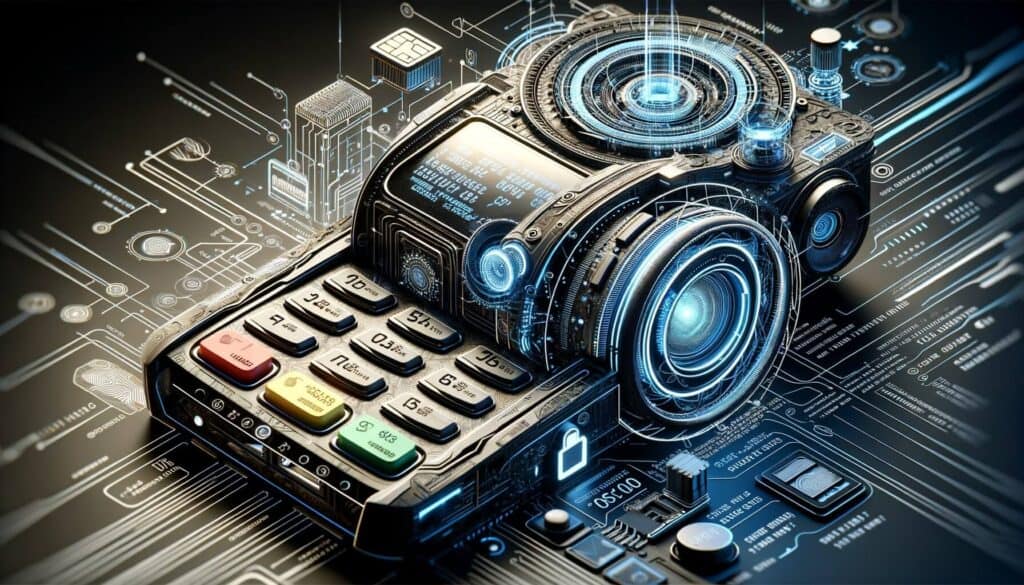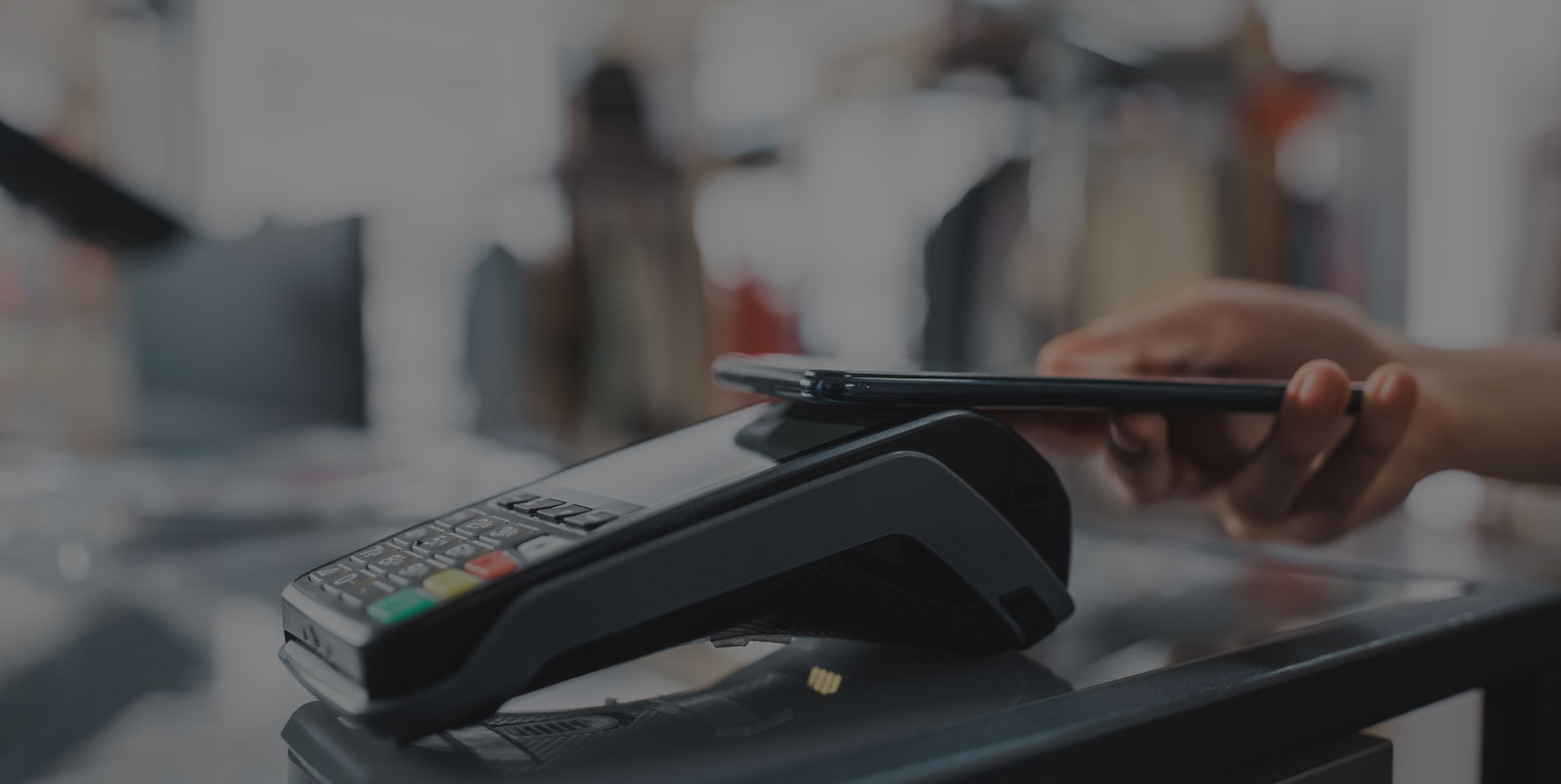
By Cindy Gardea February 14, 2025
In today’s digital age, credit card payments have become the norm for businesses of all sizes. Whether you run a small retail store or a large e-commerce platform, having the right credit card processing equipment is crucial for smooth and secure transactions. Selecting the right equipment can have a significant impact on your business’s efficiency, customer satisfaction, and overall success.
This article will guide you through the process of choosing the right credit card processing equipment for your business, considering various factors, types of equipment, security features, costs, compatibility, technical specifications, and tips for selecting the right provider.
Factors to Consider When Choosing Credit Card Processing Equipment

When selecting credit card processing equipment, it’s essential to consider several factors to ensure it meets your business’s specific needs. The following factors should be taken into account:
1. Business Type and Size: The type and size of your business play a crucial role in determining the right credit card processing equipment. Retail stores may require countertop terminals, while mobile businesses may need wireless or mobile card readers. E-commerce businesses may opt for virtual terminals or payment gateways.
2. Payment Methods: Consider the payment methods you want to accept. Apart from credit and debit cards, some businesses may want to accept contactless payments, mobile wallets, or even cryptocurrency. Ensure the equipment you choose supports the payment methods you wish to offer.
3. Transaction Volume: Evaluate your average transaction volume to determine the processing speed and capacity required. High-volume businesses may need equipment that can handle a large number of transactions without slowing down.
4. Integration with POS Systems: If you already have a point-of-sale (POS) system in place, ensure that the credit card processing equipment is compatible and can seamlessly integrate with it. This integration can streamline your operations and provide a better customer experience.
5. Scalability: Consider the future growth of your business. Choose equipment that can scale with your business needs, allowing you to add more devices or upgrade as your transaction volume increases.
6. Customer Support: Look for a credit card processing equipment provider that offers reliable customer support. In case of any technical issues or questions, having access to knowledgeable support staff can save you time and frustration.
7. Compliance and Security: Ensure that the equipment you choose complies with industry security standards, such as Payment Card Industry Data Security Standard (PCI DSS). Look for features like encryption, tokenization, and fraud detection to protect your customers’ sensitive information.
8. Cost and Fees: Consider the upfront costs, transaction fees, and any additional charges associated with the equipment. Compare different providers to find the most cost-effective solution for your business.
Types of Credit Card Processing Equipment Available in the Market

The market offers a wide range of credit card processing equipment to cater to different business needs. Understanding the types of equipment available can help you make an informed decision. Here are some common types:
1. Countertop Terminals: Countertop terminals are stationary devices typically found at the checkout counters of retail stores. They connect to a phone line or internet connection and allow customers to swipe, dip, or tap their cards for payment. These terminals are suitable for businesses with a fixed location.
2. Wireless Terminals: Wireless terminals offer the flexibility to accept payments anywhere within the range of a wireless network. They are ideal for businesses that require mobility, such as restaurants with tableside payments or delivery services.
3. Mobile Card Readers: Mobile card readers are small devices that can be attached to smartphones or tablets, turning them into portable payment terminals. They are convenient for businesses that operate on the go, such as food trucks or trade show vendors.
4. Virtual Terminals: Virtual terminals are web-based interfaces that allow businesses to process credit card payments through any internet-connected device. They are commonly used for mail or phone orders, as well as e-commerce businesses.
5. Payment Gateways: Payment gateways are online platforms that securely process credit card transactions for e-commerce businesses. They integrate with your website or online store, allowing customers to make payments directly.
Evaluating the Security Features of Credit Card Processing Equipment

Security is a top priority when it comes to credit card processing equipment. Protecting your customers’ sensitive information and preventing fraud should be a primary concern. When evaluating the security features of credit card processing equipment, consider the following:
1. Encryption: Look for equipment that supports end-to-end encryption. This ensures that the cardholder’s data is encrypted from the moment it is captured until it reaches the payment processor, making it difficult for hackers to intercept and decipher the information.
2. Tokenization: Tokenization replaces sensitive cardholder data with unique tokens. These tokens are useless to hackers, as they cannot be used to make fraudulent transactions. Tokenization adds an extra layer of security to your payment process.
3. EMV Compliance: EMV (Europay, Mastercard, and Visa) is a global standard for chip-based payment cards. Ensure that the equipment you choose is EMV compliant, as it provides better protection against counterfeit card fraud.
4. PCI DSS Compliance: The Payment Card Industry Data Security Standard (PCI DSS) is a set of security standards that businesses must follow to protect cardholder data. Choose equipment that is PCI DSS compliant to ensure you meet the necessary security requirements.
5. Fraud Detection: Look for equipment that offers fraud detection features, such as address verification service (AVS) and card verification value (CVV) checks. These features help identify potentially fraudulent transactions and reduce the risk of chargebacks.
Comparing the Costs and Fees Associated with Different Credit Card Processing Equipment

When selecting credit card processing equipment, it’s crucial to consider the costs and fees associated with each option. Here are some costs and fees to compare:
1. Upfront Costs: Some equipment may require an upfront investment, such as purchasing or leasing the hardware. Consider your budget and choose equipment that aligns with your financial capabilities.
2. Transaction Fees: Transaction fees are charged for each credit card transaction processed. Compare the transaction fees offered by different providers to find the most cost-effective option for your business. Be aware of any additional fees, such as batch fees or statement fees.
3. Monthly Fees: Some providers may charge monthly fees for using their credit card processing equipment or services. These fees can vary significantly, so it’s important to understand what is included in the monthly fee and whether it aligns with the value you receive.
4. Equipment Leasing Fees: If you choose to lease the equipment instead of purchasing it outright, consider the leasing fees. Compare the total cost of leasing over the lease term to the cost of purchasing the equipment to determine the most cost-effective option.
5. Early Termination Fees: Be aware of any early termination fees that may apply if you decide to switch providers before the end of your contract. Read the terms and conditions carefully to avoid unexpected costs.
Assessing the Compatibility and Integration of Credit Card Processing Equipment with Your Business Systems
To ensure a seamless payment process, it’s important to assess the compatibility and integration of credit card processing equipment with your existing business systems. Consider the following:
1. Point-of-Sale (POS) Integration: If you already have a POS system in place, ensure that the credit card processing equipment can integrate with it. Integration allows for automatic syncing of sales data, inventory management, and streamlined operations.
2. E-commerce Integration: If you operate an online store, consider how the credit card processing equipment integrates with your e-commerce platform or payment gateway. Look for plugins or APIs that allow for easy integration and a smooth checkout experience for your customers.
3. Accounting Software Integration: If you use accounting software to manage your finances, check if the credit card processing equipment can integrate with your accounting system. Integration can simplify the reconciliation process and save you time on manual data entry.
4. Customer Relationship Management (CRM) Integration: If you use a CRM system to manage customer data, consider whether the credit card processing equipment can integrate with it. Integration allows for better customer insights and personalized experiences.
Understanding the Technical Specifications and Features of Credit Card Processing Equipment
To make an informed decision, it’s important to understand the technical specifications and features of credit card processing equipment. Here are some key specifications and features to consider:
1. Connectivity: Determine the type of connectivity required for your business. Options include Ethernet, Wi-Fi, Bluetooth, or cellular. Choose the connectivity option that best suits your business’s needs and location.
2. Processing Speed: Consider the processing speed of the equipment. Faster processing speeds can reduce customer wait times and improve overall efficiency, especially for high-volume businesses.
3. Display and Keypad: Evaluate the display size and resolution, as well as the keypad layout and ease of use. A user-friendly interface can enhance the customer experience and reduce errors during transactions.
4. Receipt Printing: Check if the equipment supports receipt printing and the type of printer it uses. Thermal printers are commonly used for fast and efficient receipt printing.
5. Contactless Payments: Determine if the equipment supports contactless payments, such as Near Field Communication (NFC) or mobile wallets like Apple Pay or Google Pay. Contactless payments are becoming increasingly popular and offer a convenient and secure payment option for customers.
6. Battery Life: For wireless or mobile card readers, consider the battery life. Longer battery life ensures uninterrupted payment processing throughout the day.
7. Memory and Storage: Evaluate the memory and storage capacity of the equipment. Sufficient memory allows for faster processing and the ability to store transaction data for reporting and reconciliation purposes.
Tips for Selecting the Right Credit Card Processing Equipment Provider
Choosing the right credit card processing equipment provider is just as important as selecting the equipment itself. Here are some tips to help you make the right choice:
1. Research and Compare Providers: Conduct thorough research and compare different providers. Look for reputable companies with a track record of providing reliable and secure payment solutions. Read customer reviews and testimonials to gauge their reputation and customer satisfaction.
2. Customer Support: Consider the level of customer support offered by the provider. Ensure they have a dedicated support team available to assist you in case of any technical issues or questions. Prompt and knowledgeable support can save you time and frustration.
3. Contract Terms and Flexibility: Read the contract terms carefully and understand the length of the contract, any cancellation fees, and the provider’s policies. Look for providers that offer flexibility and transparent terms.
4. Scalability and Growth: Choose a provider that can accommodate your business’s growth. Consider their ability to handle increased transaction volumes, add more devices, or upgrade your equipment as your business expands.
5. Reputation and Security: Look for providers that prioritize security and compliance. Check if they are PCI DSS compliant and have robust security measures in place to protect your customers’ data. A provider with a strong reputation for security is essential for building trust with your customers.
6. Transparent Pricing: Ensure the provider offers transparent pricing with no hidden fees. Look for providers that provide clear information about transaction fees, monthly fees, and any additional charges.
7. Integration Options: If you have existing business systems, consider the provider’s integration options. Look for providers that offer seamless integration with your POS system, e-commerce platform, accounting software, or CRM system.
Frequently Asked Questions (FAQs) about Credit Card Processing Equipment
Q1. What is credit card processing equipment?
A1. Credit card processing equipment refers to the hardware or software used to process credit card payments. It includes devices such as countertop terminals, mobile card readers, virtual terminals, and payment gateways.
Q2. How do I choose the right credit card processing equipment for my business?
A2. To choose the right credit card processing equipment, consider factors such as your business type and size, payment methods you want to accept, transaction volume, integration with existing systems, security features, and costs.
Q3. What security features should I look for in credit card processing equipment?
A3. Look for credit card processing equipment that supports end-to-end encryption, tokenization, EMV compliance, PCI DSS compliance, and fraud detection features like AVS and CVV checks.
Q4. What are the costs associated with credit card processing equipment?
A4. Costs associated with credit card processing equipment include upfront costs, transaction fees, monthly fees, equipment leasing fees, and early termination fees. Compare different providers to find the most cost-effective option for your business.
Q5. How important is compatibility and integration with existing business systems?
A5. Compatibility and integration with existing business systems are crucial for a seamless payment process. Ensure that the credit card processing equipment can integrate with your POS system, e-commerce platform, accounting software, or CRM system.
Conclusion
Selecting the right credit card processing equipment is a critical decision for any business. By considering factors such as business type and size, payment methods, transaction volume, security features, costs, compatibility, and technical specifications, you can make an informed choice that meets your specific needs.
Additionally, choosing a reputable provider with excellent customer support, transparent pricing, and a focus on security will ensure a smooth and secure payment process for your customers. Take the time to research and compare different options to find the perfect credit card processing equipment that will contribute to the success of your business.
